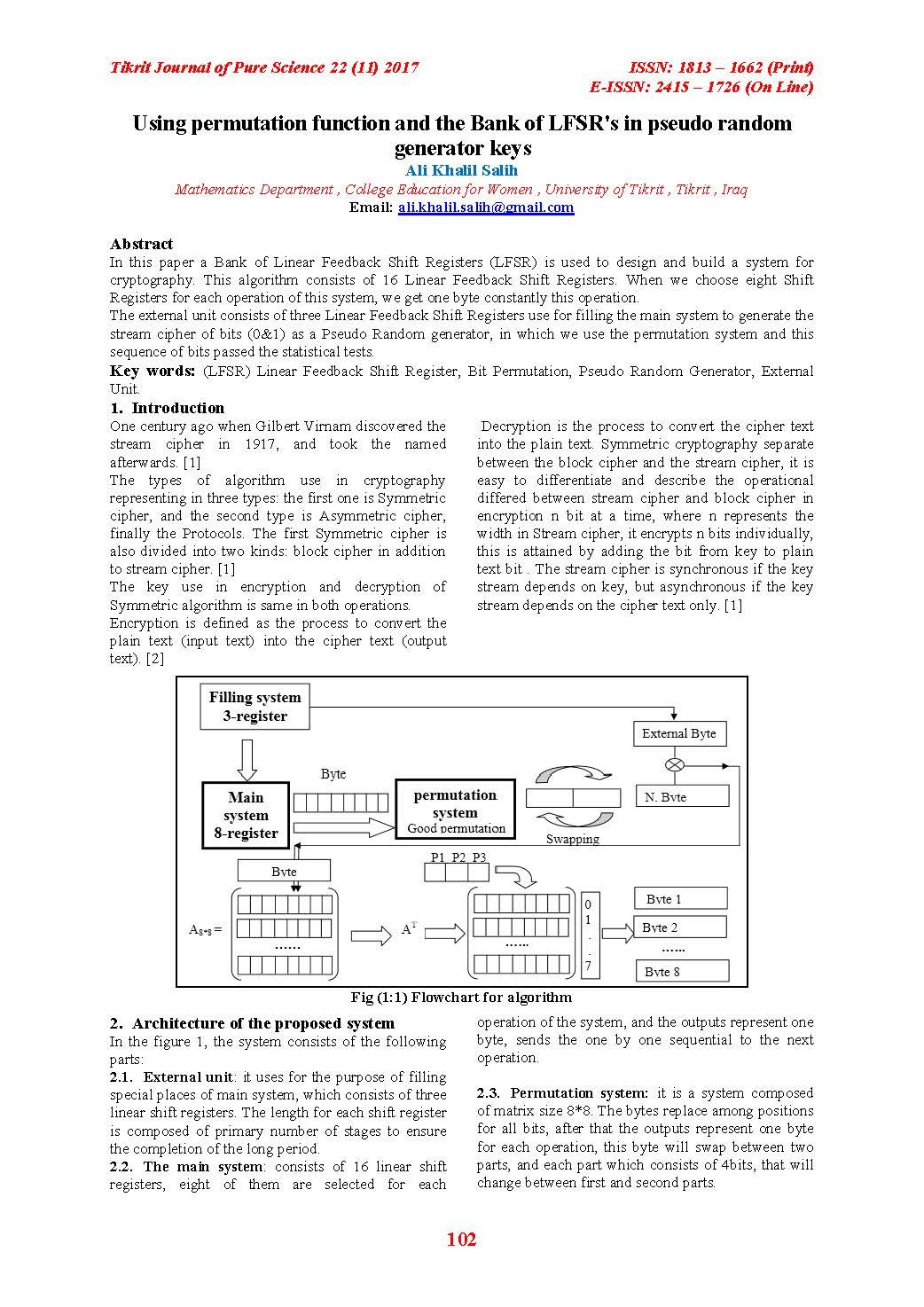Using permutation function and the Bank of LFSR's in pseudo random generator keys
Main Article Content
Abstract
In this paper a Bank of Linear Feedback Shift Registers (LFSR) is used to design and build a system for cryptography. This algorithm consists of 16 Linear Feedback Shift Registers. When we choose eight Shift Registers for each operation of this system, we get one byte constantly this operation.
The external unit consists of three Linear Feedback Shift Registers use for filling the main system to generate the stream cipher of bits (0&1) as a Pseudo Random generator, in which we use the permutation system and this sequence of bits passed the statistical tests.
Article Details

This work is licensed under a Creative Commons Attribution 4.0 International License.
Tikrit Journal of Pure Science is licensed under the Creative Commons Attribution 4.0 International License, which allows users to copy, create extracts, abstracts, and new works from the article, alter and revise the article, and make commercial use of the article (including reuse and/or resale of the article by commercial entities), provided the user gives appropriate credit (with a link to the formal publication through the relevant DOI), provides a link to the license, indicates if changes were made, and the licensor is not represented as endorsing the use made of the work. The authors hold the copyright for their published work on the Tikrit J. Pure Sci. website, while Tikrit J. Pure Sci. is responsible for appreciate citation of their work, which is released under CC-BY-4.0, enabling the unrestricted use, distribution, and reproduction of an article in any medium, provided that the original work is properly cited.
References
[1] C. Paar, J. Pelzl, “Understanding Cryptography
–A Textbook for Students and Practitioners”,
Springer-Verlag Berlin Heidelberg, 2010.
[2] C. Paar, J. Pelzl, “Understanding Cryptography
Stream Cipher”, Springer-Verlag Berlin Heidelberg,
2010.
[3] ZJ Shi "Bit Permutation Instructions:
Architecture, Implementation, and Cryptographic
Properties"- Princeton University, Princeton, NJ,
2004 .
[4] K.H. Rosen, “Discrete Mathematics and Its
Applications”, 5th Edition, McGraw-Hill, 2003.
[5] A. Menezes, P. van Oorschot ,S. Vanstone,
“Handbook of Applied Cryptography”, CRC
Press, Inc, 1996.
[6] A. Rukhin, J. Soto, J. Nechvatal, M. Smid, E.
Barker, S. Leigh, M. Levenson, M. Vangel, D. Banks,
A. Heckert, J. Dray, S. Vo''a Statistical Test Suite
for Random and Pseudorandom Number
Generators for Cryptographic Applications'',
NIST Special Publication, 2001.
[7] https://repl.it/languages/csharp.
https://msdn.microsoft.com/en-us/magazine/
msdnmaggov13.
[8] https://www.tutorialspoint.com/execute_ python_
online.php.
